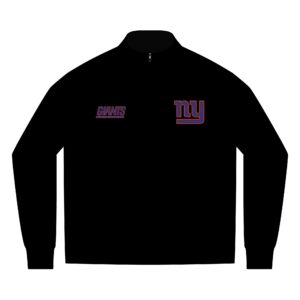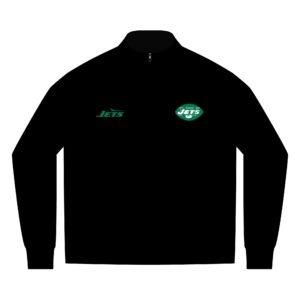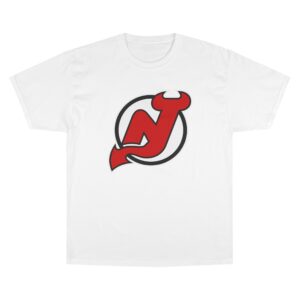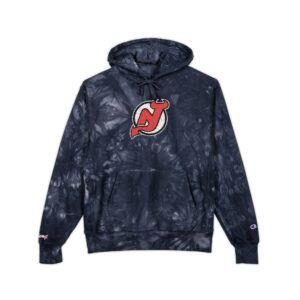As the dust settles from another disappointing playoff run, the New Jersey Devils find themselves staring down one of the most pivotal offseasons in franchise history. The team once brimming with promise now feels like it’s treading water. And while there’s no shortage of talent on the roster, questions loom larger than ever about whether General Manager Tom Fitzgerald is the right person to lead this team forward.
In his end-of-season remarks, Fitzgerald didn’t mince words: “We won’t be coming back with the same group. Because it was just not good enough.” That admission alone signals major change is coming. But is he the right architect for that transformation?
Let’s break it down.
The State of the Roster: Unfinished Business
The Devils entered the 2024-25 season with high expectations. After a strong showing in 2023 and an aggressive push to add grit and veteran presence, this team was supposed to take the next step. Instead, they regressed—again falling to the Carolina Hurricanes in the playoffs, this time in the first round.
Now, Fitzgerald is faced with a complex situation:
- Pending UFAs include Jake Allen, Nathan Bastian, Dennis Cholowski, Justin Dowling, Brian Dumoulin, Curtis Lazar, Daniel Sprong, and Tomas Tatar.
- RFAs include key young players like Luke Hughes, Cody Glass, and Nolan Foote.
The choices made this summer won’t just affect next season—they’ll shape the next five years.
Personnel Misfires: Fitz’s Growing List of Questionable Moves
For every successful trade or signing under Fitzgerald’s leadership, there’s been a head-scratching miss. His approach to bottom-six depth and player evaluation has left fans frustrated and head coach Sheldon Keefe short on viable options.
The signing of Kurtis MacDermid was widely criticized—and rightly so. More symbolic than strategic, MacDermid didn’t fill a meaningful role beyond toughness. Bringing back Tomas Tatar seemed safe but ultimately had little impact. Paul Cotter showed early promise but faded fast. The lack of improvement from players like Curtis Lazar, Erik Haula, and Nate Bastian highlights the failure to refresh the roster with players who can contribute consistently.
Worse still, Fitzgerald’s lack of aggressive action at the trade deadline left the Devils vulnerable when injuries hit. It’s hard to ask a team to make a deep run when the bench is shallow.
Asset Management: More Loss Than Gain
Great GMs build contenders by mastering the cap, maximizing return on assets, and preserving future flexibility. Fitzgerald’s recent decisions raise red flags in each category.
- The Brian Dumoulin deal was one of the lowest points of the season. Giving up a second-round pick and a recent prospect for a declining defenseman who barely moved the needle? That move was panned even before the playoffs, and postseason performance didn’t justify the price tag.
- The Jacob Markstrom trade is another questionable call. While the Devils needed a proven goaltender, giving up the 18th overall pick and defenseman Kevin Bahl for a goalie Calgary was clearly ready to move on from seems like an overpayment. With Dustin Wolf waiting in the wings, the Flames had motivation to deal Markstrom—and the Devils may have bid against themselves.
- Acquiring Daniel Sprong, who had previously cleared waivers, for a tangible asset only rubs salt in the wound. These are moves that erode confidence—not just in Fitzgerald’s judgment, but in his overall team-building philosophy.
With cornerstone prospects like Simon Nemec and Seamus Casey in the system, fans now fear what kind of return Fitz would settle for if he decides to use them as trade chips.
Lack of Identity: Who Are the Devils, Really?
Perhaps the most damning indictment of Fitzgerald’s tenure is that five years in, the Devils still don’t have a clear identity. Are they a speed and skill team, like they were in 2022-23? Or a hard-nosed, grinding group as they tried to become in 2024-25?
That identity crisis has led to mixed messages on the ice. The roster construction doesn’t consistently support either vision. The overcorrection after a goaltending slump has left the team caught between two systems and styles, never fully embracing one or executing either effectively.
A franchise stuck in transition is one that’s not competing. And that’s where New Jersey is today.
The Clock is Ticking: One Last Shot for Fitzgerald?
Ownership has yet to make any public moves or statements suggesting they’ll part ways with Fitzgerald, but make no mistake—this summer is his moment of truth.
If the Devils stumble out of the gate next season or fail to make significant progress, the front office may finally decide to move in a new direction. Declining ticket sales, flatlining revenue, and disillusioned fans don’t sit well with any ownership group.
The pressure is on. This is likely Fitzgerald’s final opportunity to prove he can guide New Jersey to its long-awaited return to Stanley Cup contention. That means smart signings, efficient trades, and a clear vision that brings cohesion to the locker room and consistency to the ice.
Conclusion: Reset or Repeat?
The New Jersey Devils have a promising core. Jack Hughes, Nico Hischier, Jesper Bratt, and Luke Hughes are all elite-level talents. But a talented core isn’t enough—championship teams need depth, clarity, and leadership. Right now, the Devils are lacking at least two of those.
Whether it’s reshaping the bottom six, solidifying the goaltending situation, or finally choosing an identity and sticking with it, this summer will either be the beginning of a redemption arc—or the continuation of a frustrating cycle.
One thing is certain: “running it back” is not an option. Change is coming to Newark.
The only question is: who should be trusted to lead it?
Follow Explore New Jersey for all the latest on Devils offseason moves, player signings, and insider analysis.











